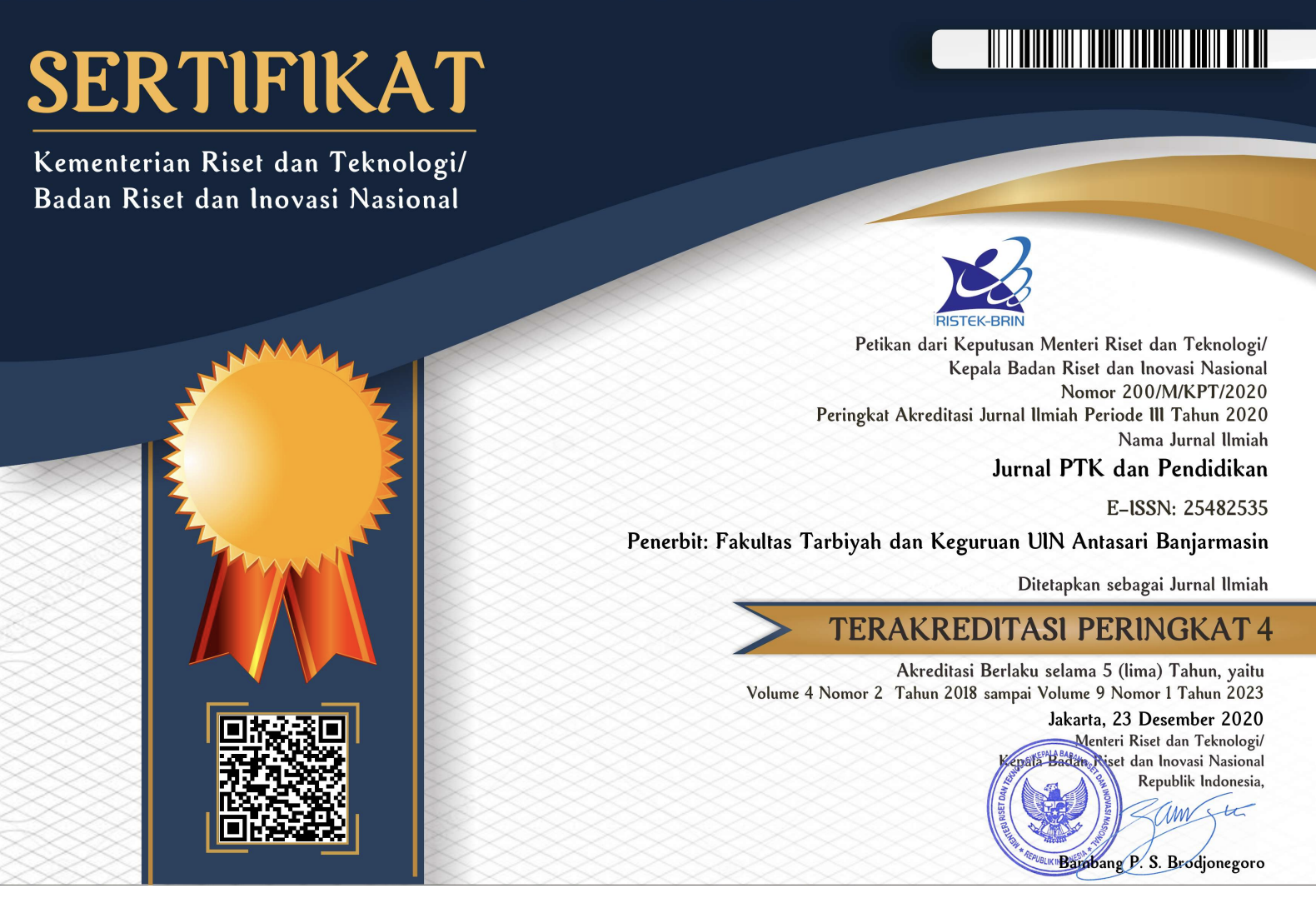ADDITIONAL MENU
Author Guidelines
Instructions for Authors
Journal of PTK dan Pendidikan
- Articles are written in English or Indonesian and have never been published or sent to any journal or proceeding;
- The length of the article should be 10 – 15 pages of A4 or 2500–4500 words. It should be sent in an editable version as a Microsoft Word (.Doc or .Docx) or Rich Text Format (.Rtf) and use standard typography (Garamond, 1.5 spacing, 12 pt, A4 size paper, top margin 3 cm, bottom 3 cm, left 3 cm, right 3 cm).
- The article is written by the following systematics:
- Title: 14pt Garamond, bold, 1 spacing, spacing after 6 pt. The title of the article in Indonesia should clearly describe the article and written in brief and informative words, no longer than 15 words.
- Author's name (accompanied by institutional afiliation and e-mail address): 12pt Garamond, bold. The name of the author in the article is listed without an academic degree, accompanied by the name of the institution, and the e-mail. If the manuscript is written by more than one person, the e-mail listed is only that of the main author.
- Abstract (accompanied by keywords): 11pt Garamond, bold, spasi 1, spacing before 12 pt, after 2 pt. The abstract should be a concise paragraph with no more than 150–250 words written in two languages (Indonesia/English) if possible. It should include a brief description of the paper, methodology, and a summary of key findings with 3–6 keywords. Keywords represent the field of expertise of the author, novelty, issues, and the tools of analysis.
- Introduction: The introduction delivers the background of the issue and helps the reader to get into the context of the article. In this section, the author must state the writing objectives and the novelty or significance of the article.
- Method: Includes basic explanations of method, data collection, location and time of research, type of research, analysis, and interpretation of data.
- Results/findings and discussion: It should highlight the findings rather than providing the detailed research results. Discussion must answers the problems, interprets the research results and the findings into the already known knowledge, confirms and/or contrasts with the research of other researchers, constructs the new theory, and/or modifies the previous theory. Discussion must also contain the implications of both theoretical and implementation results.
- Conclusion: must be able to answer the research objectives/questions and is presented in paragraph form rather than bullet points.
- References. Reference and quotation using American Psychological Association (APA) 7th Edition reference technique. The reference list is recommended using reference management tools (Zotero or Mendeley). The reference list is arranged alphabetically referring to Chicago Manual of Style 16th Edition. References should be those of the last ten years publication (>70%), except for key references. Referring to any textbook should be minimized (<30%).






